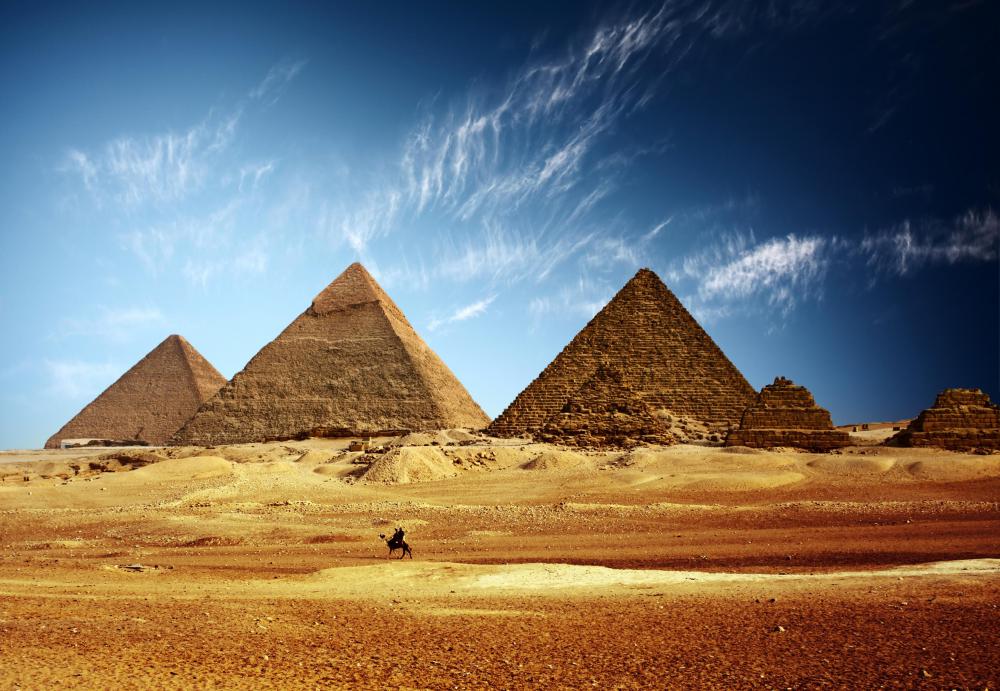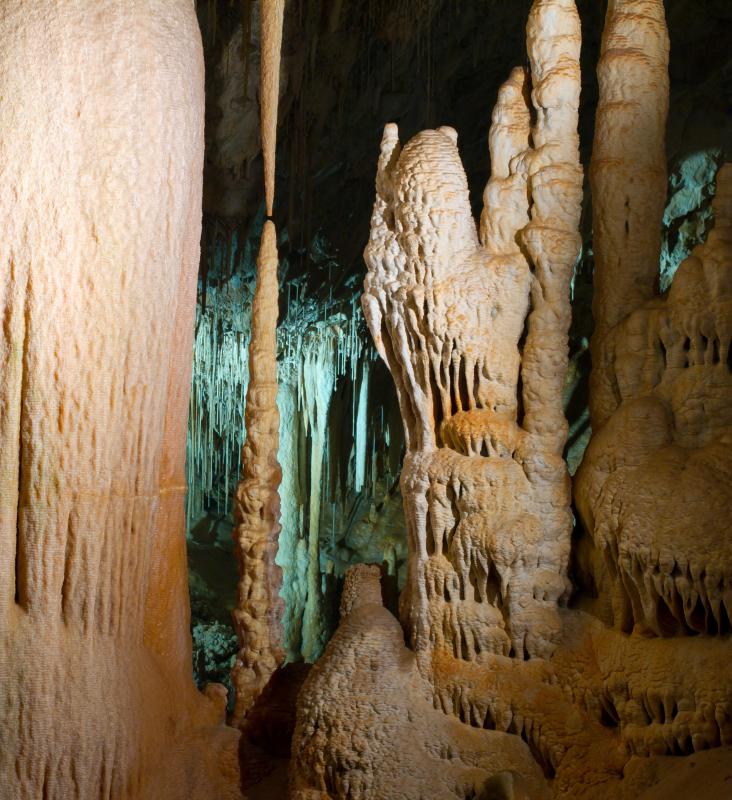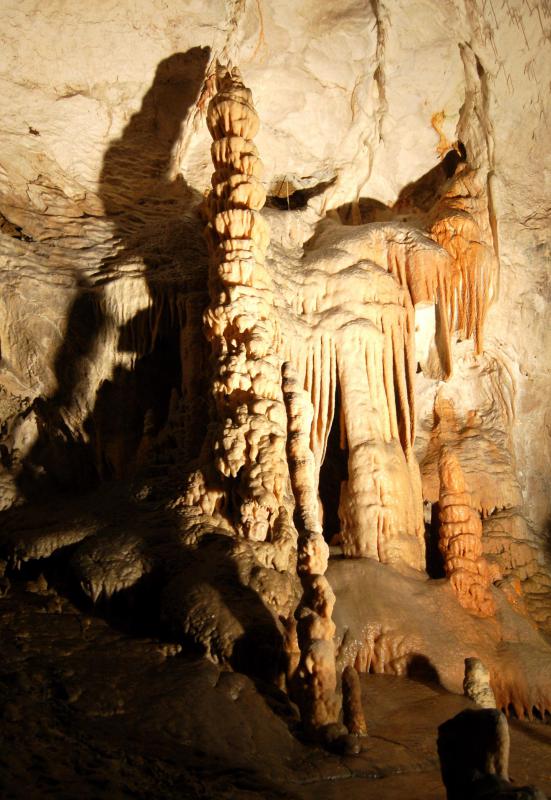At AllThingsNature, we're committed to delivering accurate, trustworthy information. Our expert-authored content is rigorously fact-checked and sourced from credible authorities. Discover how we uphold the highest standards in providing you with reliable knowledge.
What is Alabaster?
Alabaster is a term which is used to refer to two forms of calcium. Both are characterized by being creamy to snow white in color, and they have been used in carving, ornaments, and ornamental statuary for centuries. The color is so memorable that the word is also used to refer to other white objects, which is why romance novels refer to “alabaster bosoms.” Numerous examples of carved alabaster can be found in museums and venerable buildings all over the world.
The ancients favored calcite alabaster, a very hard form of calcium carbonate. This stone was originally imported from Egypt, a country which also produced a number of works of art using this mineral. It is often found in caverns as a deposited mineral in the form of stalagmites. Modern alabaster is usually gypsum alabaster, or calcium sulfate. Gypsum is much softer than calcite, and it is found extensively in England, where deposits of seawater slowly evaporated over the course of centuries. However, the ancients knew and used both forms.

While white is the classic color associated with alabaster, the mineral can also occur in other colors, such as pale brown or reddish, and it may be veined with color. It is often slightly translucent, and some carvers work the stone to bring out this natural translucence, which gives it a sort of glow. Thinly sliced alabaster has also been used to make windows and transparent artifacts. Examples of work dating back thousands of years have been found in cultures all over the world, suggesting a widespread popularity for the mineral.

Stonecarvers and masons continue to work in alabaster. Some carvers like to make mock-ups in gypsum, since the mineral is soft and easy to work. Others may use it to produce pieces for sale. The stone is readily available from a wide range of suppliers who mine it in several locations around the world. Various sizes can be purchased, depending on need, and it is an excellent idea to inspect stone, if possible, before purchasing it, to ensure that it is in good condition.

Translucent alabaster objects should be kept cool so that they do not cloud. Water and a soft cloth can be used to clean this mineral, with only very mild soaps if soap is needed. In some cases, objects may be waxed to make them less porous, in which case people may want to periodically strip the wax off and re-wax the piece. People may want to consult an artist or mason about wax removers that are suitable for alabaster, and if they have a very old artifact, it is better to entrust it to someone who is experienced with conservation of such objects.
Frequently Asked Questions
What exactly is alabaster?
Alabaster is a fine-grained, translucent form of gypsum, a mineral composed of calcium sulfate dihydrate. It's cherished for its smooth texture and ability to be carved into intricate designs. Historically, alabaster has been used for sculpture, lampshades, and window panes due to its translucency and softness, which makes it easier to work with compared to other stones.
How can you distinguish alabaster from marble?
Alabaster is softer and more translucent than marble. While marble has a Mohs hardness of about 3 to 5, alabaster ranks at just 2, making it much easier to scratch or carve. Alabaster also typically exhibits a smoother, waxy luster, whereas marble tends to have a granular texture and is less translucent. These characteristics are key in distinguishing between the two materials.
Where is alabaster commonly found?
Alabaster deposits are found worldwide, with significant sources in Italy, Egypt, the United States, and Spain. The ancient Egyptians quarried alabaster in the Nile Valley, while in the United States, notable deposits exist in Utah and Colorado. Each region's alabaster can have distinct qualities and colors, ranging from pure white to shades of pink, brown, and yellow.
What are the historical uses of alabaster?
Alabaster has a rich history dating back to ancient Egypt, where it was used for canopic jars and various artifacts. Throughout the Middle Ages, it became popular in Europe for religious carvings and altarpieces. In Italy, alabaster was extensively used during the Renaissance for statues and ornaments. Its softness and translucency have made it a preferred material for detailed works of art.
Is alabaster durable?
While alabaster is prized for its beauty, it is not particularly durable. Its softness makes it susceptible to scratches, and it can be damaged by water and acids. Over time, alabaster can also develop a patina or change color when exposed to light. For these reasons, alabaster objects often require careful handling and maintenance to preserve their appearance.
Can alabaster be used outdoors?
Due to its vulnerability to weathering, alabaster is not recommended for outdoor use. Exposure to rain and temperature fluctuations can cause it to deteriorate. Alabaster is best suited for indoor environments where humidity and temperature can be controlled. If used outdoors, it would require protective measures and regular maintenance to mitigate damage from the elements.
AS FEATURED ON:
AS FEATURED ON:













Discuss this Article
Post your comments